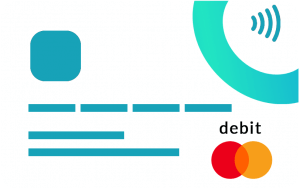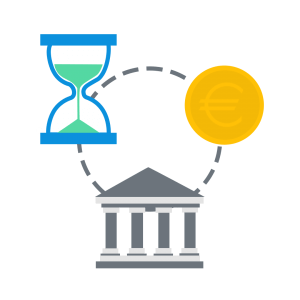Payment Processing for Small Businesses: a Beginners Guide
If you are thinking on taking your business online, this is the post for you. In this article we discuss the most popular payment processing for small businesses methods and tips.
ECommerce is an entire business structure that includes; web development, security, fund processing, and shipping. These things work together for a successful online experience.
Taking your business online means that everything is done digitally. There are additional challenges that come along, such as fraudsters and getting the suitable means of receiving the payment.
With that in mind, there is always the need to understand how everything works, especially payments. In this article, I will look into different eCommerce methods of payment processing for small businesses.
What is the meaning of payment processing?
In short, payment processing refers to the automation of all the online transactions between a merchant and their clients.
There is always the need for security in the internet world, which is handled by a third-party service to ensure no fraud. The process includes an option to vary, accept or decline transactions.
How does e-commerce Payment Processing work?
In most cases, it will depend on the payment method that the customer will choose. It always has two stages, the approval of sales and the payment for the services. The following are some of the basic processes of how the entire process takes place.
Stage 1: Visit the website
The customer visits the websites and then searches for a product they are interested in on the search engine.
Stage 2: Choosing a payment method
Once they choose the product, they now proceed to the checkout page. Here, usually they are given multiple payment methods they can choose from. Of course, it depends on how many methods a merchant has integrated in their store. For instance, let’s say they choose a credit or a debit card.
Stage 3: Sending of transaction information
Once the customer chooses the option to pay, this information is sent to the gateway in charge of encrypting the customer’s data for security. Once secured, the gateway sends this information to the gateway processor.
Stage 4: Processor request for funds
The processor now sends information to the customer’s bank to request if he or she has sufficient balance or enough credit to complete the transaction.
Stage 5: Approval or decline of the request
The issuing bank receives the request from the processor. They have an option to accept or decline the transaction. In most cases, if the customer has funds in the account, it will be approved. If it hasn’t, it will be declined. After this, the bank informs the processor of the action taken and why.
Stage 6: The merchant confirms the transaction
Once the bank has approved the payment, the merchant completes the transaction for the customer.
All these stages happen in a matter of seconds. You may see that the process is long, but in a digital world everything is done in a matter of seconds. The merchant always ensures that once they receive the funds from the bank, it is credited to the customer’s account to show that they have paid for the services they are getting.
So, what’s the best method of payment processing for small businesses?
Card payments
Credit and debit card payment methods are one of the best payment processing for small businesses. It provides a reliable, well known payment environment for your clients. Since it is so well-known world wide, you can be sure that most of your clients will not drop out during the checkout process. Also it is a best used international transaction method, meaning small business is able to accept payment from all around the world. This might be a kick-off point when thinking about scaling your business.
 1. Credit card
1. Credit card
Have you heard of credit cards? If not, then you have been missing a lot in the field of business and real-life experience. To start, it is a plastic card that is usually given by your favorite bank. This card is essential in making payments for goods and services anywhere and anytime.
This card allows you to purchase any item though you do not have funds in it. It is like it lends you money to do whatever you wish for, though, within limit.
If you have an online business, this one is the most popular way people make purchases. Even though they do not have a balance in your account, they will still be able to purchase your items and pay. Your bank issuer is always in charge of paying the merchant, and then, later on, you refund the bank.
When it comes to ecommerce, as a merchant, you may wonder how you will get paid. This is something that should not worry you at all. A credit card comes with a specific number irrespective of where the customer comes from; hence they can purchase your item. The credit card has been accepted in almost all the countries around the globe. With this, as a merchant, you are assured that you will always get paid for the service or product you offer.
How credit card works
As earlier mentioned, the customer will visit your website and access your goods and services. Once they choose the item they wish to purchase, they are redirected to the checkout page. Here, they can choose a credit card payment option. Once they choose to place an order, the transaction data is sent to the processing network, which later contacts the in charge bank for the transaction to occur.
Remember, this client does not have any funds in their account and is free to purchase anything, but it has some limitations. So, the bank has to determine, if when the item is being purchased, the transaction amount is lower than the limit. If it is lower, then the bank approves the payment.
Once it is approved, the network processes the transaction, thereby charging the transaction fee, then releases the funds to the merchant.
This is a card that every merchant should have in their eCommerce system as a payment method. It is one of the main payment methods that can take your business to the next level, since offering convenient payment methods for your customers can help scale your business to the next level.
2. Debit Card

This is another great option that every merchant should have in their eCommerce system. I am sure you might have heard about this card. It is a card in which the owner deposits money to use anywhere. Unlike the Credit card, here you must have funds to do any transaction.
Debit cards allow the holder to transfer money through their bank account easily. One is allowed to purchase any time as long as they have a balance in their account.
It is a widely used card by multiple people and companies as it is fast and efficient when it comes to transacting. This is because there is no credit that the bank is offering you; they do not need to check your limit. Hence the transactions here are immediate.
Most customers use a debit card, and it can be a lost opportunity if, as a merchant, you do not integrate it into your website. Comparing the credit and debit cards, the debit card transaction is faster since the risk of fraud is lower for the bank.
 Digital wallet
Digital wallet
As the name suggests, it is a technological aspect where smart devices such as mobile phones, tablets, and watches are used to accept purchases. It is a method that has been applied to some platforms.
With the digital wallet, the customer does not have to provide their information from time to time. They only have to fill them once and after that, they will only be making payment. As a merchant, you need a POS terminal that uses radio waves to allow cashless mobile payment.
Though this technology may seem so enticing to use, it is very risky. There is a high chance of fraudsters who have already occupied the online market. The only thing that can give the merchant hope is that the wallets are usually linked with the cards.
Automated clearing house
Automated clearing house or ACH comes in the form of a network. It is an electronic payment whereby the buyer makes direct payment from their bank through wire transfer.
With this kind of payment, once the product entices the buyer, they can authorize a direct payment from a personal bank account to the merchant’s account
After that, the merchant receives the funds as depository direct to their account.
For the transaction to be complete, the receiving depository financial institution usually checks on the customer’s balance on your ecommerce system and confirms the purchase of the product.
Choosing the best method of payment processing for small businesses
Having the right method for payment processing for small businesses and choosing the security over convenience for your online transactions is one of the best things for your business in it’s development stage.
One of the best ways to have multiple customers around the globe is to allow them to choose from many options on how to pay. People are always concerned about how fast and secure the platform is. Bad quality can feel like it’s a fraud, so they might never purchase from you or even leave a negative review.
I strongly recommend choosing a reliable, well-known payment provider. You should not try to save money when it comes to online payments. Reliability and security is the key to having your business run smoothly. Be sure to read the reviews of other merchants about that company and choose the best suitable provider for you today!
Open a merchant account for free
and start processing payments with Cardinity!

 1. Credit card
1. Credit card Digital wallet
Digital wallet